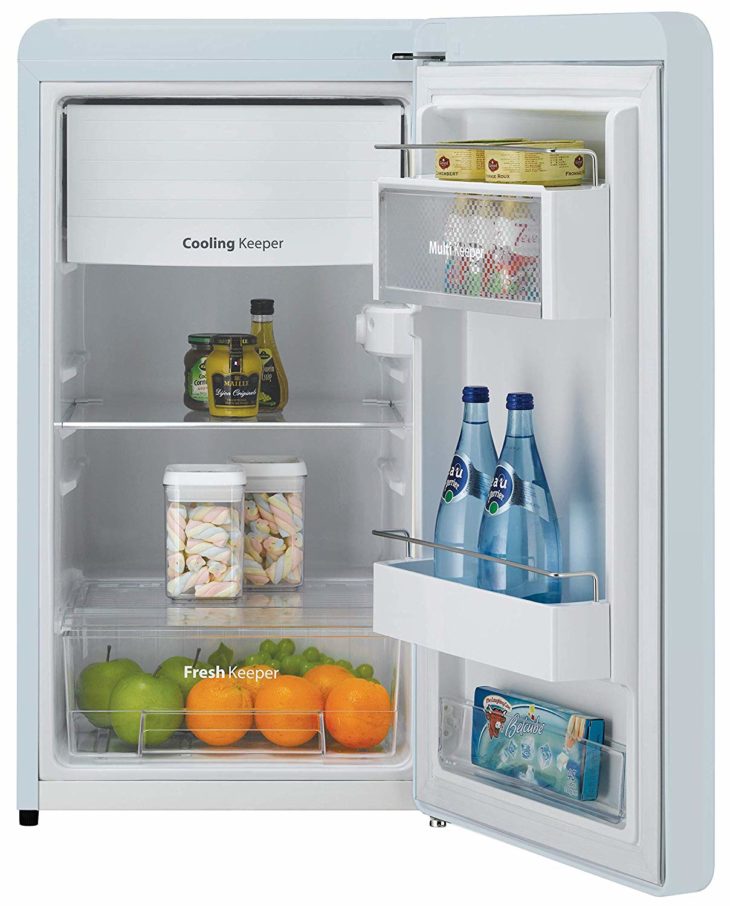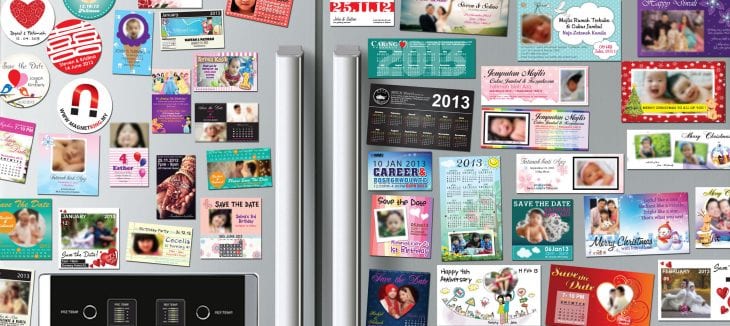I’m the type of person who constantly looks for household spaces to improve: I want a better-organized desk, better-organized cabinets, better-organized closets. But the one household space that drives me absolutely up the wall is the refrigerator, because negligence of the refrigerator can be both disgusting and costly.
I worked in grocery retail for more than three years, specifically in food production. That means that I spent an average of an hour a day, but up to my entire 8- or 9-hour workday, organizing refrigerators, freezers, and dry food shelves. But it’s one thing when your employer gives you all the tools you need to organize an industrial-size refrigerator, and quite another when you’re trying to keep tabs on your food in your own home. Most of us don’t grow up doing anything but sort of shoving food away, treating the refrigerator as a procrastination tool (“I’ll get to this later, maybe, or maybe not, I don’t know, I can’t see what’s in there so I don’t care anymore”) rather than, say, a health tool.

Source: Amazon
And the fridge really is sort of health central in your home. Diet is so important to health, and it’s the perishable foods that go in your fridge that are often the most nutritious — greens, vegetables, dairy, and meats. For that reason, you should want to look in your fridge. Looking in your fridge should actively make you joyful. You should be able to look in your fridge and think, “Oh, the possibilities!”, not “Ugggghhhhhhh I really do not know what to do, here.”
I’m not perfect with my fridge. I try to clean it out regularly, but haven’t developed a system for it that could work long-term until now. I’ve read through a bunch of fridge-organization guides and have landed on something that’s something of a home-oriented interpretation of my professional kitchen experience. Here’s the plan:
Your main objectives are to:
-
Eat everything in the fridge. That doesn’t mean forcing yourself to eat things you don’t want to, of course, but rather to only buy food that you will eat, in small quantities, and keep it fresh for as long as possible. For that reason, you also want to…
-
Keep as little in the fridge as possible. Again, it’s not an “I’ll get to it later” box; it’s your toolkit for your nutrition. You need to be able to see all the food that you have available, and not have that food go to waste for sitting in back of umpteen other food items. This will mean buying fewer groceries more often, and cooking and eating them right away. You’ll save money and have a healthier diet.
Stock up on the following:
-
Good food storage containers. A popular option is Snapware, which is oven-safe and dishwasher-safe glass containers. This way there’s no transfer between your baking dishes and your food storage containers to create extra dishes. Food storage containers should be the centerpiece of your fridge organization efforts.
-
Labels that peel off easily. Masking tape is good for this, but you can find “nicer” looking labels online, too.
-
Cold-safe baskets. Have both a stackable and non-stackable option so that you can keep like items with like items no matter how big or small they are.
-
Cling wrap. Pro tip: If you hate cleaning your fridge shelves, you can line them with cling wrap. When they get dirty, you can peel it off, throw it out, and re-line without having to wipe everything down.
-
One large, colored basket. Use it to store items that are expiring soon so that you know to eat them first.
-
Egg holders. They’re sturdier than egg cartons and allow for better vertical storage.
-
Magazine racks. Since most freezers only have one shelf, it’s hard to store anything in the freezer without just lopping stuff on top of each other. Use stackable food storage containers and magazine racks that have been turned on their side to create vertical storage.

Source: fridgemagnetmalaysia.com
And finally, the method:
-
When you buy produce, chop it up and put it in storage containers as soon as you get home. Yes, it’s a pain in the neck and you have to dedicate some time to it, but you will be far more likely to use your produce if it’s already prepped. This is a good reason to buy produce on the weekends.
-
Keep a chart on your refrigerator door of how long different items stay fresh in the fridge. The general rule in the kitchens where I worked was 5-7 days for produce, 2-3 days for raw meats, five days for deli meats, 7-10 days for cheese (less for soft cheese and more for hard cheese), 3 weeks for raw eggs, 7 days for hard-boiled eggs. Check out these food safety charts for more information.
-
When you put something in the fridge, label it with the date it was prepped or opened and the date it will expire. This way, all of your food stays fresh, and you know what to use first.
-
First in, first out. In kitchens this is “FIFO,” and it means that if you have multiples of a product, you organize them such that you will grab the oldest one, rather than opening a new product and letting the other one go to waste unnecessarily.
-
Place items in the fridge according to how cold they need to be. Meats should be closest to the fan, vegetables relatively far away (they should be cold, but don’t let them get frozen by proximity to the fan), and condiments the furthest. Again, this way, everything stays fresher longer.
-
Only store items in the fridge that need to be refrigerated. Bread, potatoes, tomatoes, onions, and most fruits shouldn’t be stored in the fridge – the cold and the moisture will make some of them go bad (bread especially). If an item is stored out of the fridge at the grocery store, chances are it can be stored out of the fridge at home, too.
-
Don’t use the crisper for vegetables. You won’t look at your vegetables if they’re stuck in a drawer, and you won’t eat them if you’re not looking at them. Use the drawers for cheese and beverages instead.
-
Keep raw meat in the freezer. My freezer is mainly a stockpile of meats (with a few bags of frozen fruits). Raw meat only keeps for 2-3 days in the fridge, which doesn’t give you a whole lot of flexibility about what you eat and when. Thaw it out piecemeal on the day you know you’re going to use it rather than gambling on putting it in the fridge. Just remember, don’t refreeze it once it’s thawed – it’ll taste nasty once you finally eat it.
-
Store vertically whenever possible. This is just the best organization tip in general – horizontal storage is a terrible idea because you’re wasting space. The more you can stack, the better, even with a small amount of food in your fridge, because that way you have space to see everything that’s in there.
-
Don’t use baking soda to mask smells; just clean your fridge out regularly. Pick a day every week — say, Saturday morning — to give your fridge a once-over and throw out anything that’s gone bad or that you know in your heart of hearts you are not going to eat.
Voilà! There’s your project for this weekend. Now get to it!
[Buzzfeed]
[Greatist]
Original by Rebecca Vipond Brink
